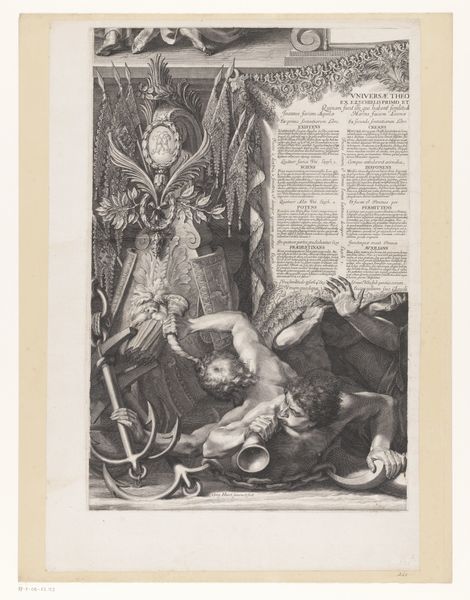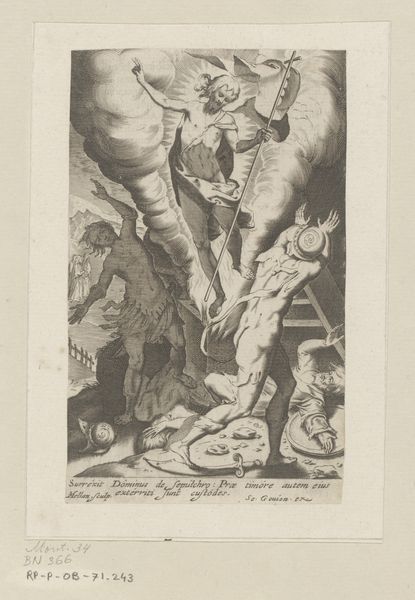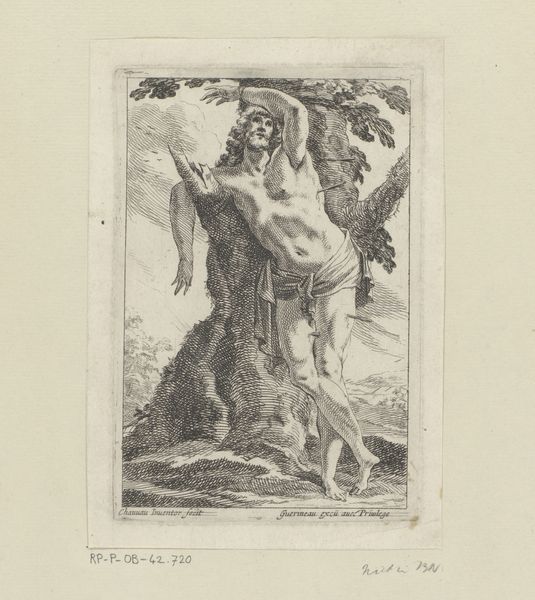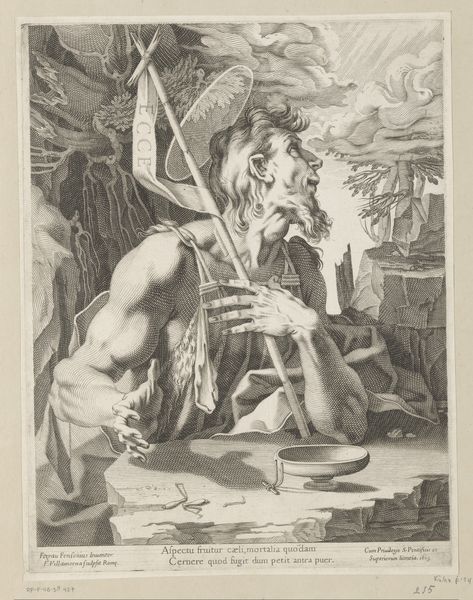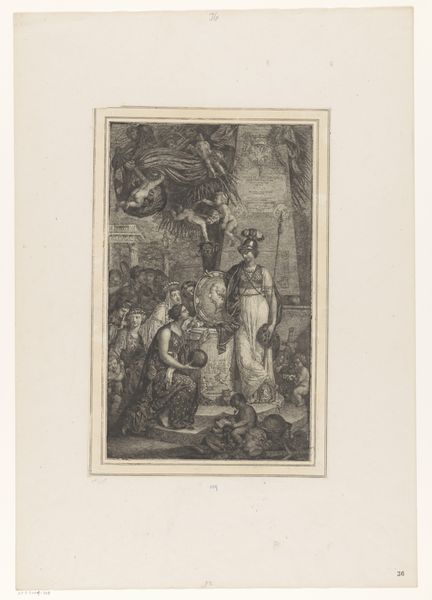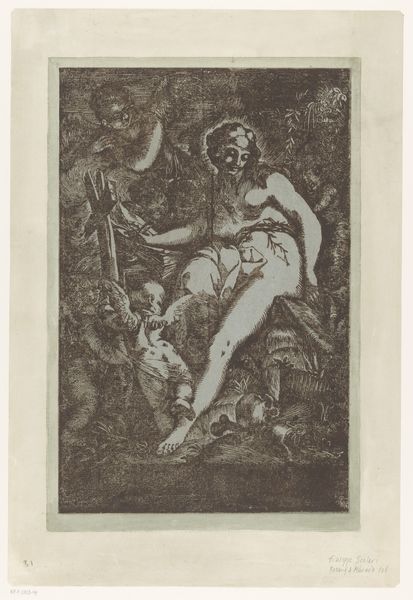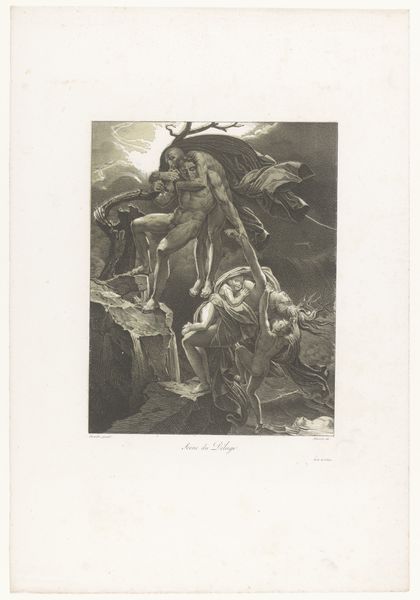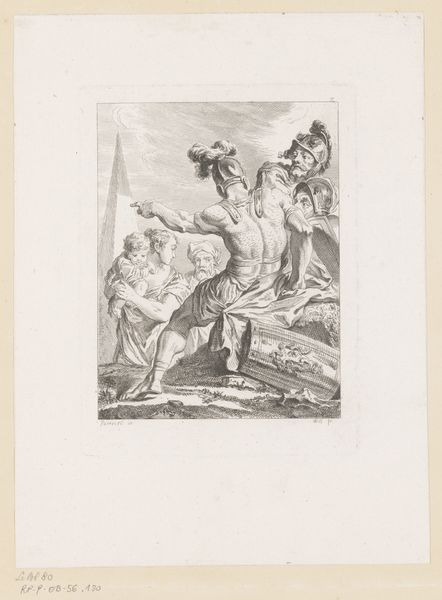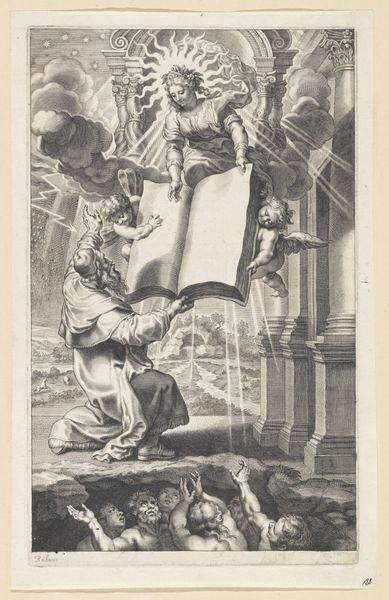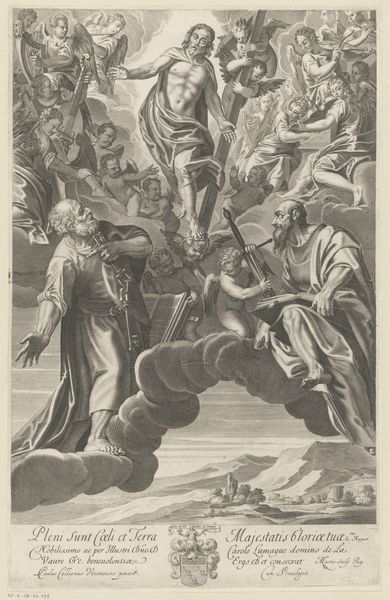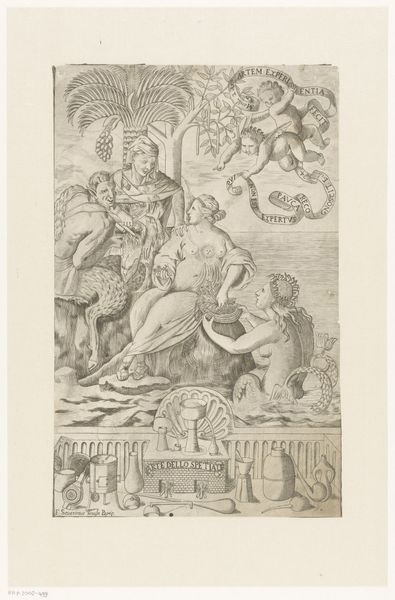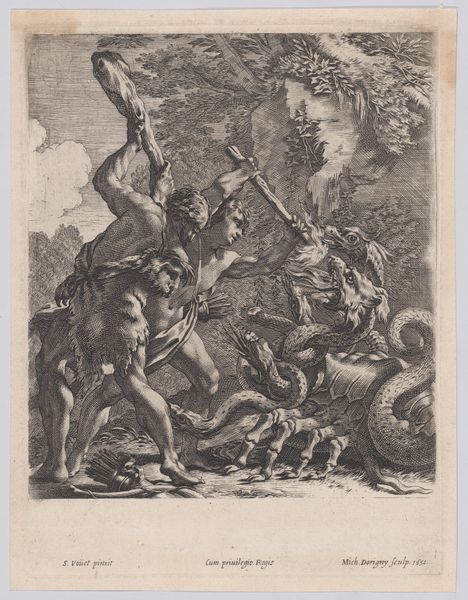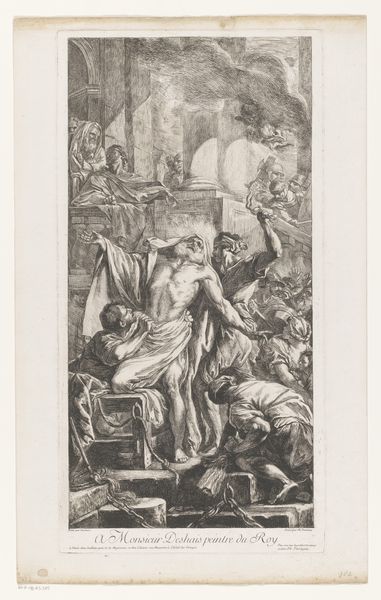
Allegorische voorstelling met Armand-Jean du Plessis hertog van Richelieu, in het gezelschap van Apollo en Neptunus (deel rechtsonder) 1616 - 1670
0:00
0:00
print, engraving
#
allegory
#
baroque
#
ink paper printed
# print
#
figuration
#
line
#
history-painting
#
engraving
Dimensions: height 558 mm, width 400 mm
Copyright: Rijks Museum: Open Domain
Editor: So this is part of an allegorical print, created sometime between 1616 and 1670 by Grégoire Huret. It depicts Richelieu with Apollo and Neptune, rendered in ink on paper using an engraving technique. The level of detail is amazing. How do you unpack a piece like this? Curator: For me, it begins with understanding the means of production. Engravings like this weren't simply artistic expressions, they were commodities. This print facilitated the spread of imagery and ideology on a massive scale. What can we learn about the intended audience based on the combination of allegorical imagery, text, and skilled craftsmanship? Editor: So you’re less focused on, say, the figures of Neptune and Apollo, and more interested in the context of its creation and distribution? Curator: Precisely. Consider the labor involved in producing this engraving. The engraver was a skilled artisan. How does understanding their role, the tools they used, and the system that commissioned their work change our perception of this image? What socio-economic messages are embedded within the choices made regarding subject matter, level of detail, and printing techniques? Editor: It's easy to get lost in the classical references and symbolism. I see your point that analyzing the production unveils other fascinating dimensions. Curator: And who controlled its consumption? Was it meant for private enjoyment or public distribution? Was it political propaganda? Think about the raw materials: paper, ink, metal plates. Even their sourcing tells a story. Editor: I hadn't really considered how material choices played into the work’s meaning and purpose. I was fixated on just the images! It’s all interconnected. Curator: Exactly. Material and the means of making and circulation are never neutral. Editor: Thanks. It really broadens my perspective on how to look at art. I will go back and re-examine Huret's print from this angle.
Comments
No comments
Be the first to comment and join the conversation on the ultimate creative platform.
